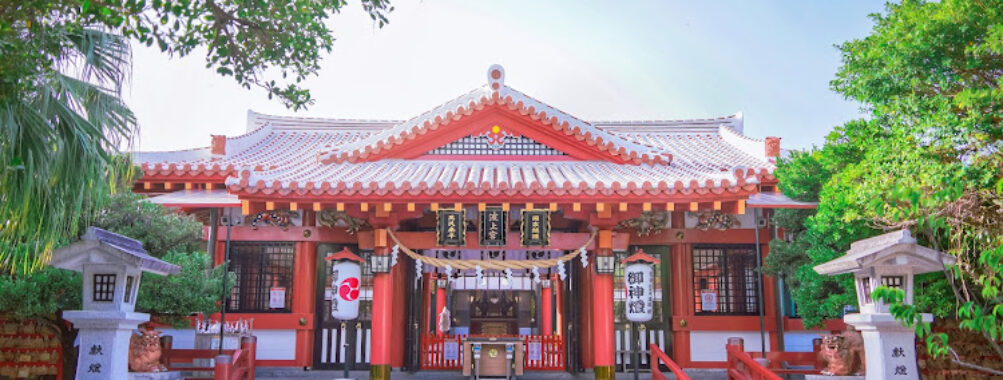
Naminoue Shrine
Table of Contents
Description
Ya know what’s really cool about Naminoue Shrine? It literally sits right on top of these dramatic cliffs overlooking Naha’s coastline – I couldn’t believe my eyes the first time I saw it! As Okinawa’s most important Shinto shrine, this place has been watching over the city since 1890, but the spiritual significance of this spot goes way back before that. I absolutely love how the bright vermillion gates (torii) pop against the blue ocean backdrop – it’s totally Instagram-worthy!
The shrine’s name actually means “Above the Waves” in Japanese, and boy does it live up to that! When I visited, I spent a good hour just soaking in those sweeping ocean views. Inside, you’ll find all the traditional elements of a Shinto shrine, but what makes this one special is how it blends Okinawan and Japanese architectural styles. The dragons carved into the walls? Those are pure Ryukyu Kingdom influence right there.
Key Features
- Stunning clifftop location with panoramic ocean views
- Historic vermillion torii gates marking the shrine entrance
- Traditional purification fountain (chozuya)
- Main shrine building (honden) with unique Ryukyuan architectural elements
- Prayer hall (haiden) open to visitors
- Sacred rope (shimenawa) marking the boundary between ordinary and sacred spaces
- Viewing platform overlooking Naminoue Beach
- Regular Shinto ceremonies and seasonal festivals
Best Time to Visit
From my experience, early morning (around 7-8 AM) is pure magic here – the crowds are thin and the light is perfect for photos. But if you’re like me and not exactly a morning person, late afternoon works great too! The shrine is especially lively during traditional festivals, particularly New Year’s celebrations (hatsumode) when thousands of locals come to pray for good fortune.
Summer months can get pretty sticky with Okinawa’s humidity, so spring (March-May) and fall (October-November) are your best bets for comfortable sightseeing. And here’s a little secret – visiting during sunset on a clear day? Absolutely breathtaking! Just remember the shrine closes at 5 PM, so time your visit accordingly.
How to Get There
Getting to Naminoue Shrine is actually super easy – even I managed not to get lost! From Naha’s main bus terminal, hop on the Yui Rail to Asahibashi Station. From there, it’s about a 10-minute walk north. If you’re coming from Naha Airport, take the monorail to Asahibashi Station – the whole journey shouldn’t take more than 30 minutes.
For those who prefer walking, the shrine is roughly a 20-minute stroll from Kokusai-dori, Naha’s main shopping street. Just follow the signs – they’re pretty well-marked in English. And if you’re feeling fancy, any taxi driver in Naha will know exactly where to take you when you say “Naminoue-gu.”
Tips for Visiting
First things first – dress respectfully! While they’re not super strict, I’d suggest avoiding beachwear or anything too revealing. Remember, this is an active place of worship, not just a tourist spot. Oh, and bring some small change for a traditional blessing (ema) – writing your wishes on these wooden plaques is part of the whole experience!
Don’t forget your camera – the views are incredible! But be mindful about photography during ceremonies or when people are praying. There’s a proper way to pray at Shinto shrines: bow twice, clap twice, make your prayer, then bow once more. I totally messed this up my first time, but the locals were super nice about it!
If you’re visiting in summer, bring water and maybe a small towel – that Okinawan sun can be intense! And while you’re there, why not combine your visit with a trip to Naminoue Beach below? It’s the only beach right in Naha City, and though it’s not the biggest, it’s pretty cool to see a shrine and beach combo. Just make sure to check the shrine’s opening hours – they sometimes close for private ceremonies or maintenance.
Location
Places to Stay Near Naminoue Shrine
Find and Book a Tour
Explore More Travel Guides
No reviews found! Be the first to review!